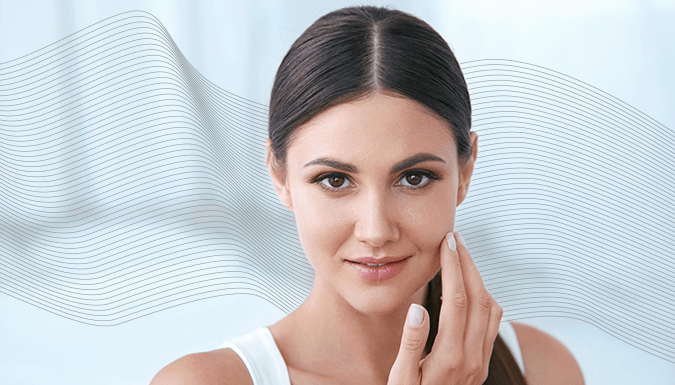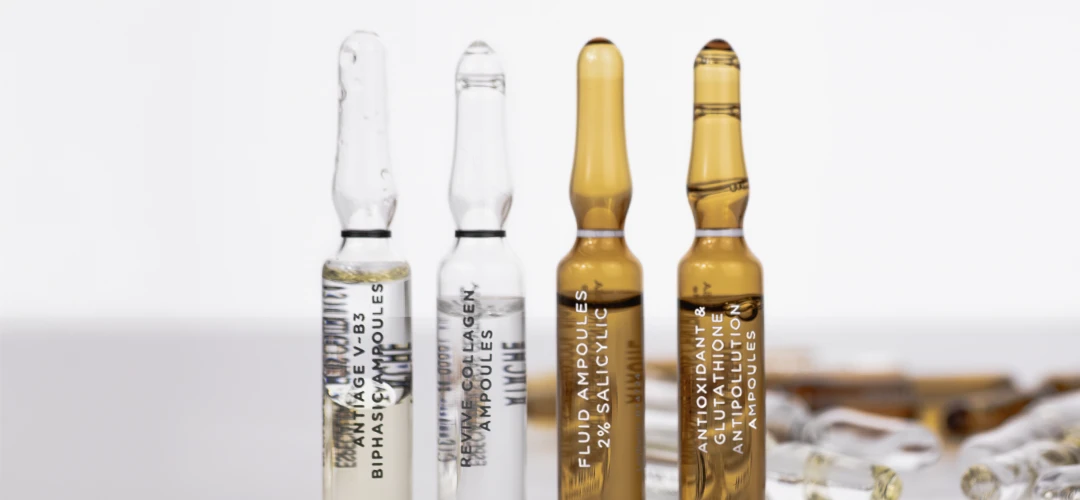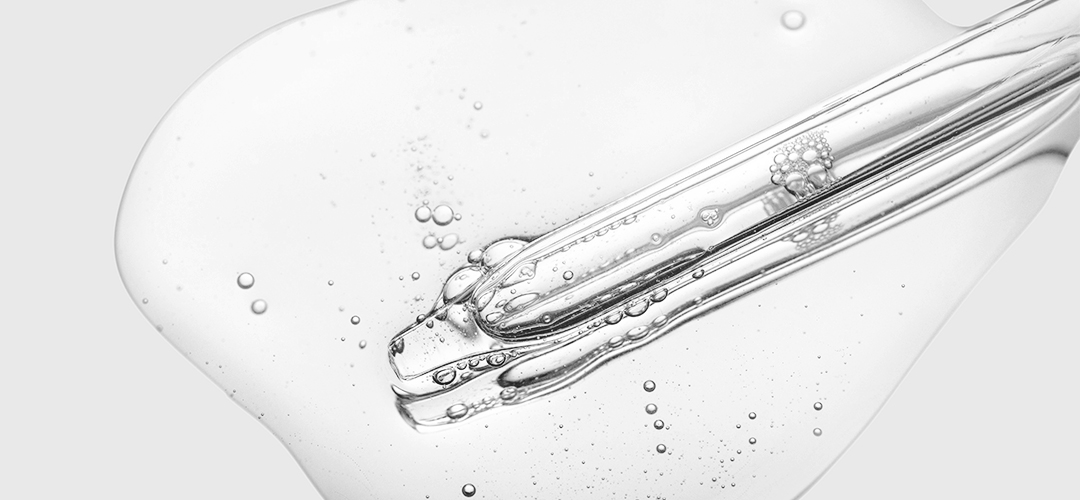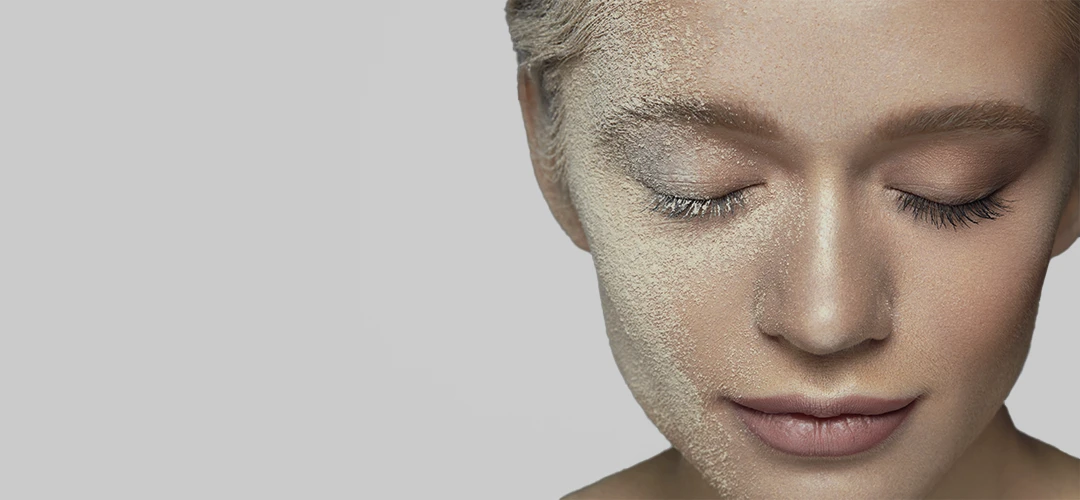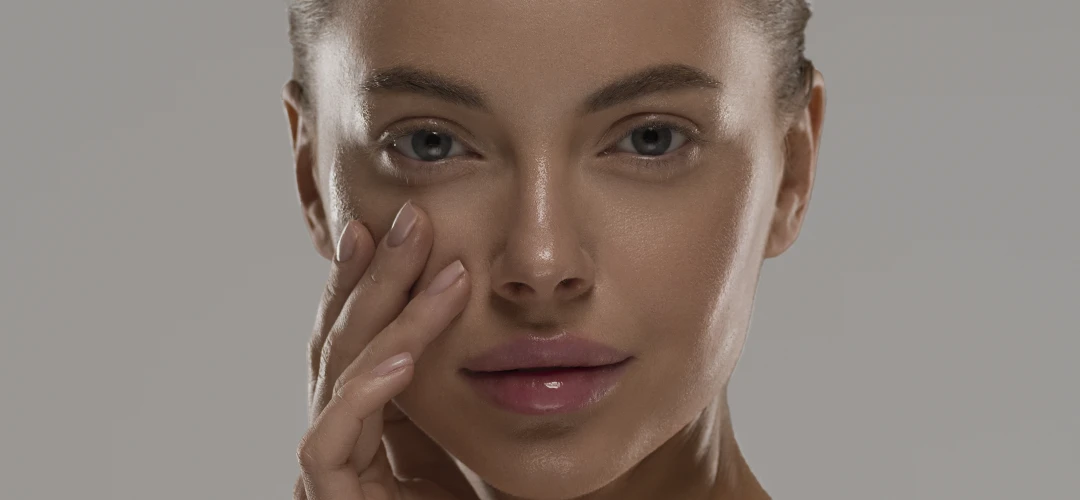The skin is one of the most important organs in the body. Knowing its composition, its layers, its functions and its overall role in the human ecosystem is vital to keep it healthy and take good care of it.
Shall we discover it?
DEFINITION OF SKIN
The skin is the largest organ in the human body, with a surface area of approximately 2m2, a thickness of between 0.5 and 4mm and a weight that can be up to 5kg.
It represents both the border and the means of communication between our body and the outside environment.
It’s very resistant and flexible, performing various functions, such as protecting the body from external aggressors, regulating temperature and eliminating toxins.
And not only that, skin also plays an important role in the social sphere.
FUNCTIONS OF THE SKIN
Consists mainly in maintaining the body at an optimal temperature, around 37 degrees Celsius. This is done through the regulation of blood flow, through the dilation or constriction of blood vessels, and through water evaporation, in the form of sweat, through the sweat glands.
In addition to protecting the inside of the body, contributing to the maintenance of its structures, and controlling exchanges with the outside environment, it’s capable of destroying bacteria thanks to its secretions and of protecting itself against ultraviolet rays thanks to melanin, which is a chemical pigment that is synthesised in the epidermis.
Various types of cells and corpuscles present in the layers of the skin, together with the nerve endings, are responsible for the skin feeling touch, pain, cold and heat.
Our skin is also part of the immune system, therefore it has functions related to defending the body from external aggressors. Skin plays a main role in detecting threats, regulating the inflammatory response and destroying pathogenic microorganisms, among other things.
The only vitamin that our body is capable of synthesising by itself is Vitamin D, a task that it performs induced by the action of UV rays. This vitamin helps absorb calcium, which contributes to the healthy formation of bones and teeth, prevents chronic diseases and has anti-ageing and immune functions.
SKIN LAYERS
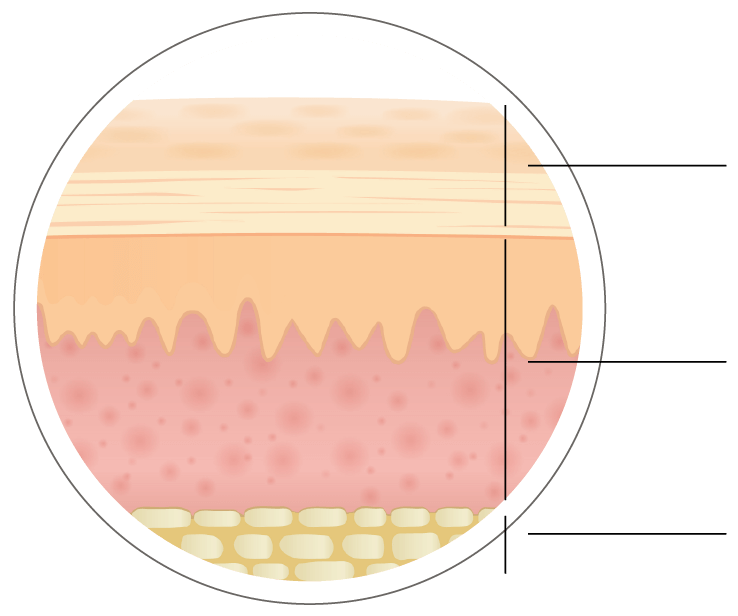
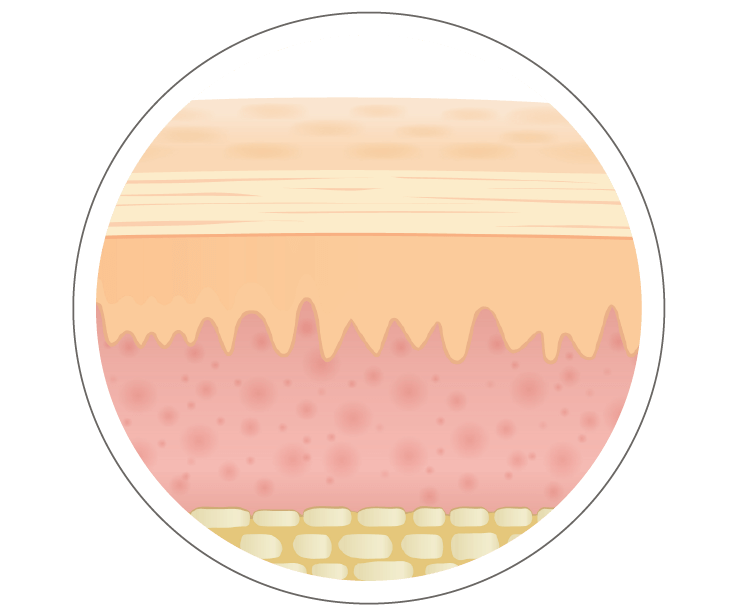
Our skin is made up of three layers: the epidermis, the outermost layer, the dermis, and the hypodermis, the deepest layer.
The epidermis is in direct contact with the outside world, lacks blood supply and is continually renewing itself. The cells of the epidermis are responsible for the main barrier processes such as skin regeneration and impermeability (keratin), skin tone and protection against UV radiation (melanin), etc.
The dermis is where connection processes between the inside of the body and the epidermis take place, such as the generation of sweat to cool it or blood circulation. In addition, it is in this layer where collagen, elastin and hyaluronic acid levels determine the firmness, elasticity and hydration of the entire skin.
Lastly is a subcutaneous layer known as the hypodermis, which is mainly composed of connective and adipose tissue and whose main functions include absorbing mechanical impacts, helping to maintain body temperature, storing energy and supporting the dermis. This layer also determines the shape of the human silhouette.
COMPOSITION OF THE SKIN LAYERS
COMPOSITION OF THE EPIDERMIS
The epidermis is covered by an emulsion made up of sweat (sweat glands) and sebum (sebaceous glands) known as the hydrolipidic barrier. This barrier keeps the skin flexible and protects it against fungi and bacteria.
The epidermis is made up of four types of cells, which are responsible for the unity and impermeability of the skin and its barrier function, as well as providing part of the sensory information that we receive through the skin.
Keratinocytes represent between 80 and 90% of epidermal skin cells, and are responsible for generating keratin, which together with epidermal lipids, binds cells together and makes the skin almost completely waterproof. They also protect the skin from bacterial invasion and UV radiation. They originate in the lower layer of the epidermis and move up though its layers until they’re shed off. They have an approximate life cycle of 28 days
These cells make up only 3–5% of the epidermis and are responsible for recognising antigens, substances that trigger the production of antibodies and a possible immune response. Langerhans cells also regulate the skin’s reaction to infections and inflammations.
The main function of these cells is to produce melanin, a substance that has an important role in protecting against sunlight. They constitute about 5% of the cells in the basal layer of the epidermis and are responsible for both skin and hair colour and the appearance of various types of skin hyperpigmentation (dark spots) and hypopigmentation (white spots).
Merkel cells are extremely close to nerve endings, so they play a role in the perception of mechanical stimuli, such as touch. They represent less than 0.1% of the composition of our skin, although they are more abundant in highly sensitive areas, such as the fingertips.
COMPOSITION OF THE DERMIS
The composition of the dermis is a lot more complex than that of the epidermis. It’s located immediately below the epidermis, and in addition to cells, it contains structures and elements that contribute to the execution of its multiple functions.
Blood vessels are structures belonging to the circulatory system that are responsible for circulating the blood pumped by the heart. They maintain the correct functioning of both the dermis and the epidermis by carrying nutrients and oxygen to them, and eliminate waste products from cellular metabolism.
Hair follicles are cavities that extend from the epidermis to the dermis, reaching the hypodermis in the case of terminal hair (non-vellus hair). They are able to produce hair due to their high concentration of stem cells.
There are two types of glands in the epidermis, sweat glands and sebaceous glands. The former are responsible for excreting sweat both to eliminate toxins and to regulate body temperature. The latter are responsible for secreting the oils that form the hydrolipidic skin barrier alongside sweat.
These are small ‘projections’ of the dermis into the epidermis that agglutinate blood vessels inside. They facilitate the passage of nutrients and oxygen to the deep layers of the epidermis and also form and condition the appearance of fingerprints.
These are the main cells in the dermis and are responsible for the synthesis of collagen, elastin and hyaluronic acid, among other substances, and for maintaining the correct composition of the extracellular matrix. Collagen and elastin are structural proteins that give the skin certain qualities: in the case of collagen, firmness, and in the case of elastin, elasticity. Hyaluronic acid is a glycosaminoglycan and its main function is to retain water to keep the skin well-hydrated.
These are receptors that, in addition to detecting touch and pressure stimuli, are capable of signalling to the brain the exact place where the skin was touched. They are also found in the epidermis and are concentrated in highly sensitive areas.
Pacini’s corpuscles are conductive receptors that are found deep in the dermis. They’re capable of providing instant feedback on vibrations, touch and pressure.
Made up mainly of nerve endings and Merkel cells. They are receptors that give the skin the ability to perceive texture and pressure. They’re most concentrated at the fingertips.
These corpuscles are responsible for thermal sensations, feeling hot and cold, and pressure. They’re made up of interlocking networks of nerve fibres and are covered by connective tissue.
Nerve endings found in the dermis and epidermis responsible for transmitting the sensation of pain.
SKIN CONDITIONS
Texto introducción sobre estados de la piel… The skin is the largest organ in the human body, with a surface area of approximately 2m2, a thickness of between 0.5 and 4 mm and a weight that can be up to 5 kg.
They’re not skin types
THEY ARE CONDITIONS
Find out more about skin and dermocosmetics

